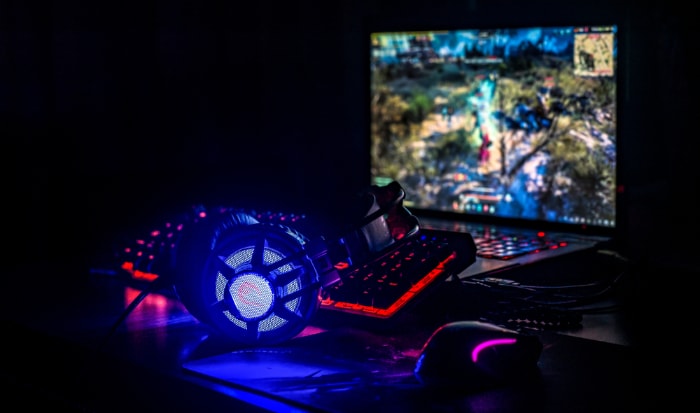Does Lowering Resolution Increase FPS? Exploring the Truth

Gaming enthusiasts often grapple with the dilemma of choosing between crisp, high-resolution graphics and smooth, high frame rate gameplay. This balancing act is at the heart of modern gaming experiences.
Exploring how resolution impacts Frames Per Second (FPS) is not just about technical details; it’s about enhancing your gaming journey. High FPS ensures a seamless and responsive gaming experience, while higher resolutions offer more detailed and immersive visuals.
But can lowering resolution be a simple yet effective trick to boost your game’s FPS?
The Basics of Resolution and Frame Rate
Understanding the fundamentals of resolution and frame rate is crucial for any gamer. These two factors play a significant role in defining your gaming experience, influencing everything from the clarity of the visuals to the smoothness of gameplay.
Definition of Resolution in Video Games
Resolution in video games refers to the number of pixels displayed on the screen. It is typically presented as width x height (for example, 1920×1080).
Higher resolutions mean more pixels, leading to clearer and more detailed images. Games at 4K resolution (3840×2160) provide stunning visual detail, making the gaming world more immersive.
However, higher resolution demands more from your computer’s graphics card, which can affect performance.
Explanation of Frames Per Second (FPS)
Frames Per Second (FPS) measures how many images (or frames) your computer can display in a second. Higher FPS results in smoother motion, making games feel more responsive.
For a fluid gaming experience, a steady FPS rate is essential. While 30 FPS is considered the minimum for smooth gameplay, most gamers aim for 60 FPS or higher for an even smoother experience.
Relationship Between Resolution and FPS
The relationship between resolution and FPS is a game of give and take. Higher resolutions provide better image quality but require more processing power, which can reduce FPS.
On the other hand, lowering the resolution reduces the strain on your graphics card, potentially increasing FPS and making the game run smoother. This trade-off is crucial for gamers to understand when configuring their gaming setups for optimal performance.
Impact of Lowering Resolution on FPS
Lowering the resolution in video games is a well-known strategy for boosting FPS, especially on systems with limited graphics capabilities. This section explores how this adjustment can lead to smoother gameplay and why it can be a critical move for gamers.
How Lowering Resolution Can Increase FPS
When you lower the resolution of a game, you essentially reduce the number of pixels your graphics card needs to process. This reduction in workload allows the graphics card to render frames more quickly, leading to an increase in FPS.
This is particularly noticeable in fast-paced games or on systems with older or less powerful graphics cards. By sacrificing some visual fidelity, players can gain a more fluid and responsive gaming experience.
Technical Explanation: GPU Load and Processing Power
The graphics processing unit (GPU) is responsible for rendering all the visuals in a game. High resolutions put a significant load on the GPU, as it has to compute more pixels per frame.
Lowering the resolution decreases the number of pixels, thus reducing the GPU’s workload. This decrease in demand allows the GPU to allocate resources more efficiently, improving overall frame rate performance.
It’s a balance between the GPU’s capabilities and the game’s graphical demands.
Case Examples: Performance Improvements in Different Games
Different games respond differently to changes in resolution. Some games, especially those with highly detailed graphics, can see a significant improvement in FPS when the resolution is lowered.
For instance, a game running at 4K might struggle to maintain 30 FPS on a mid-range system, but could easily achieve 60 FPS or more at 1080p. This improvement in FPS can transform the gaming experience, making it smoother and more enjoyable.
Other Factors Influencing FPS

While resolution is a key player in determining FPS, it’s not the only factor in the equation. Various other elements also significantly impact the frame rate, and understanding these can help gamers fine-tune their systems for the best possible performance.
Graphics Settings Beyond Resolution
In addition to resolution, other in-game graphics settings like texture quality, shadow detail, and anti-aliasing also affect FPS. These settings determine how detailed and realistic the game’s graphics are.
High settings can greatly enhance visual appeal but are more taxing on the GPU. Lowering these settings can lead to a substantial increase in FPS, particularly in graphically intensive games.
Hardware Constraints: CPU and GPU Capabilities
The capabilities of your computer’s hardware, especially the CPU (Central Processing Unit) and GPU, are fundamental in determining FPS. A powerful GPU can handle high resolutions and detailed graphics settings more easily, maintaining a higher FPS.
Similarly, a fast CPU can process game logic and physics more quickly, contributing to smoother gameplay. Upgrading hardware can be a direct way to improve FPS, especially for older systems.
Software Optimization and Game Engine Efficiency
The way a game is coded and optimized plays a significant role in its performance. Games that are well-optimized by developers can run smoothly on a wide range of hardware.
The efficiency of the game engine, the software framework used to build and run the game, is also crucial. Some engines are better at managing resources and can deliver higher FPS even on less powerful systems. Regular software updates and patches can also improve a game’s performance over time.
The Trade-off: Quality vs. Performance
In the world of gaming, players often face the challenging decision of balancing visual quality with performance. This balance is crucial for an enjoyable gaming experience, as it impacts both the game’s aesthetics and its playability.
Visual Quality at Higher Resolutions
High-resolution settings offer gamers stunningly detailed and crisp graphics. Playing at resolutions like 4K brings game worlds to life with incredible clarity and depth. However, these visual benefits come at a cost.
Higher resolutions demand more from the GPU, often resulting in lower FPS. Gamers with high-end systems may not face this issue, but those with mid-range or older systems might have to compromise on these lush visuals for smoother gameplay.
Balancing Performance and Aesthetics for an Optimal Gaming Experience
Finding the right balance between visual quality and performance is a personal choice that varies from gamer to gamer. Some may prefer a visually stunning experience at the cost of some smoothness in gameplay, while others prioritize a higher FPS for a more responsive gaming experience.
Adjusting graphics settings to find this balance is key. Gamers can experiment with different resolutions and settings to see what combination offers the best experience for their preferences and system capabilities.
Personalizing Settings: Finding Your Sweet Spot
Each game and gaming system is unique, and what works for one might not work for another. Gamers are encouraged to personalize their settings, tweaking resolution, and other graphics options to find their ideal balance.
This sweet spot is where the game looks good and plays well, providing an enjoyable and immersive experience. Through experimentation and adjustment, gamers can optimize their settings to suit their individual preferences and hardware specifications.
Advanced Concepts in Resolution and FPS
Diving into the more sophisticated aspects of resolution and FPS reveals some innovative technologies and techniques that enhance gaming experiences. These advanced concepts are crucial for gamers looking to push their gaming setups to the limits of performance and visual quality.
Dynamic Resolution Scaling: A Modern Solution
Dynamic Resolution Scaling is a cutting-edge technology used in modern games. This feature automatically adjusts the game’s resolution in real-time based on the current GPU load.
When the action gets intense and the GPU struggles to maintain a stable FPS, the resolution dynamically decreases to compensate. Conversely, when the GPU has extra capacity, the resolution increases, improving visual quality.
This technology ensures a more consistent FPS, providing a smoother gaming experience without the need for manual adjustments.
The Role of Refresh Rate and V-Sync in Gaming Experience
Refresh rate, measured in Hertz (Hz), is the number of times a screen refreshes its image per second. A higher refresh rate can make a significant difference in how smooth the game feels, especially when combined with a high FPS.
V-Sync, or Vertical Sync, is a display setting that synchronizes the game’s FPS with the monitor’s refresh rate to prevent screen tearing. However, enabling V-Sync can sometimes cause input lag or reduce FPS, so gamers need to consider whether the smoother visuals are worth these potential trade-offs.
Future Trends: 4K Gaming and Beyond
As technology advances, higher resolution gaming, like 4K, is becoming more accessible. Future trends suggest a continued push towards higher resolutions, with developments in GPU technology and optimization techniques to support these demands.
Additionally, emerging technologies like ray tracing, which provides realistic lighting effects, are set to further transform the gaming landscape, offering even more immersive and visually stunning experiences. Keeping an eye on these trends helps gamers stay ahead of the curve in optimizing their gaming experiences.
Conclusion
Crafting the ideal gaming experience involves a careful balance between resolution and FPS. This guide has highlighted how lowering resolution can significantly boost FPS, providing smoother gameplay.
We’ve also explored various factors like graphics settings, hardware capabilities, and software optimization that influence FPS. The trade-off between visual quality and performance is a personal choice, with each gamer finding their unique sweet spot through experimentation.
Advanced concepts like Dynamic Resolution Scaling and the importance of refresh rates further refine this balance, pointing towards future trends in gaming technology.
Gamers are encouraged to experiment with their settings, keeping in mind their system’s capabilities and personal preferences. Whether prioritizing crystal-clear visuals or opting for ultra-smooth gameplay, understanding these concepts allows for a more informed and enjoyable gaming experience.
With technology continually evolving, staying informed and adaptable is key to making the most of your gaming adventures.


